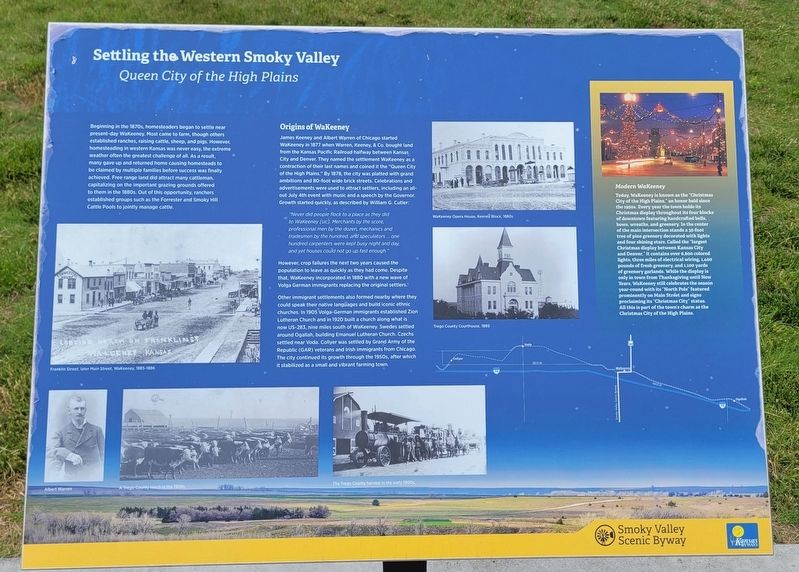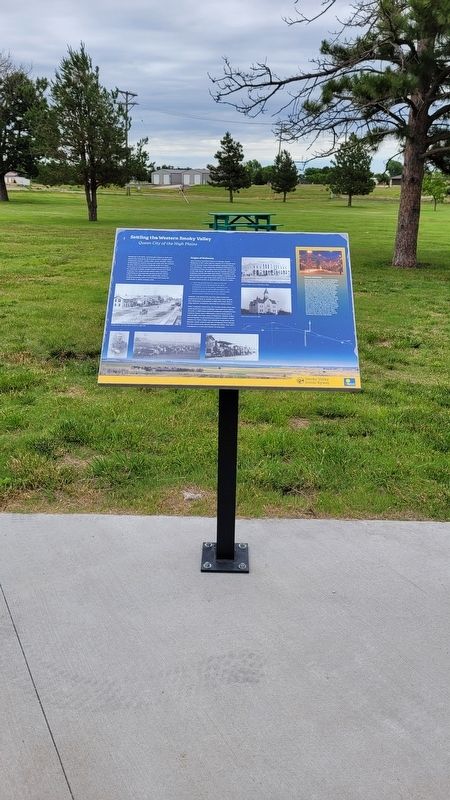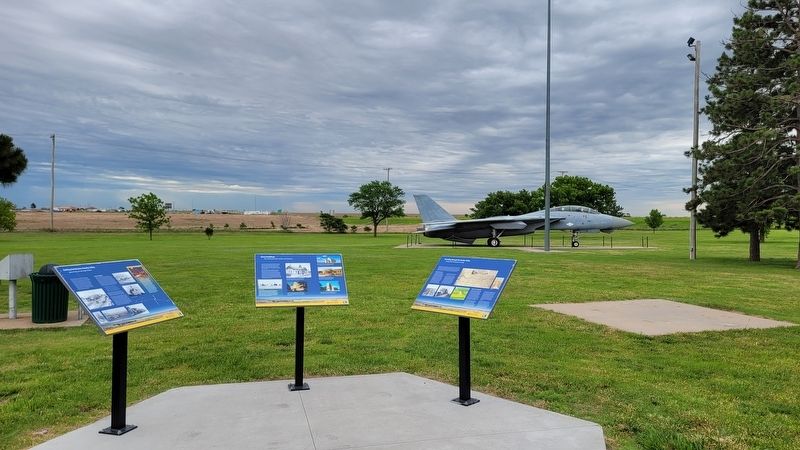WaKeeney in Trego County, Kansas — The American Midwest (Upper Plains)
Settling the Western Smoky Valley
Queen City of the High Plains
Origins of WaKeeney
James Keeney and Albert Warren of Chicago started WaKeeney in 1877 when Warren, Keeney, & Co. bought land from the Kansas Pacific Railroad halfway between Kansas City and Denver. They named the settlement WaKeeney as a contraction of their last names and coined it the "Queen City of the High Plains." By 1878, the city was platted with grand ambitions and 80-foot wide brick streets. Celebrations and advertisements were used to attract settlers, including an all out July 4th event with music and a speech by the Governor. Growth started quickly, as described by William G. Cutler:
"Never did people flock to a place as they did to WaKeeney [sic]. Merchants by the score, professional men by the dozen, mechanics and tradesmen by the hundred, and speculators... one hundred carpenters were kept busy night and day, and yet houses could not go up fast enough."
However, crop failures the next two years caused the population to leave as quickly as they had come. Despite that, WaKeeney incorporated in 1880 with a new wave of Volga German immigrants replacing the original settlers.
Other immigrant settlements also formed nearby where they could speak their native languages and build iconic ethnic churches. In 1905 Volga-German immigrants established Zion Lutheran Church and in 1920 built a church along what is now US-283, nine miles south of WaKeeney. Swedes settled around Ogallah, building Emanuel Lutheran Church. Czechs settled near Voda. Collyer was settled by Grand Army of the Republic (GAR) veterans and Irish immigrants from Chicago. The city continued its growth through the 1950s, after which it stabilized as a small and vibrant farming town.
Modern WaKeeney
Today, WaKeeney is known as the "Christmas City of the High Plains," an honor held since the 1950s. Every year the town holds its Christmas display throughout its four blocks of downtown featuring handcrafted bells, bows, wreaths, and greenery. In the center of the main intersection stands a 35-foot tree of pine greenery decorated with lights and four shining stars. Called the "largest Christmas display between Kansas City and Denver," it contains over 6,800 colored lights, three miles of electrical wiring, 1,400 pounds of fresh greenery, and 1,100 yards of greenery garlands. While the display is only in town from Thanksgiving until New Years, WaKeeney still celebrates the season year-round with its "North Pole" featured prominently on Main Street and signs proclaiming its "Christmas City" status. All this is part of the town's charm as the Christmas City of the High Plains.
Captions
Middle Left: Franklin Street, later Main Street, WaKeeney, 1885-1886
Lower Left: Albert Warren
Lower Left: A Trego County ranch in the 1920s
Lower Middle : Trego County Courthouse, 1889
Upper Right : WaKeeney Opera House, Keeney Block, 1880s
MiddleRight : Trego County Courthouse, 1889
Erected by Kansas Byways and Post Rock Scenic Byway.
Topics. This historical marker is listed in these topic lists: Animals • Railroads & Streetcars • Roads & Vehicles • Settlements & Settlers. A significant historical date for this entry is July 4, 1877.
Location. 39° 0.899′ N, 99° 53.114′
W. Marker is in WaKeeney, Kansas, in Trego County. Marker can be reached from South 1st Street, ¼ mile east of South Avenue. The marker is located in the eastern section of the Eisenhower Park by the F15 fighter jet display. Touch for map. Marker is in this post office area: Wakeeney KS 67672, United States of America. Touch for directions.
Other nearby markers. At least 4 other markers are within walking distance of this marker. Stone Buildings (here, next to this marker); Traveling through the Smoky Valley (here, next to this marker); Victory Fire Bell (approx. ¾ mile away); Trego County Veterans Memorial (approx. ¾ mile away).
Also see . . . WaKeeney, Kansas. Wikipedia (Submitted on June 29, 2022, by James Hulse of Medina, Texas.)
Credits. This page was last revised on June 29, 2022. It was originally submitted on June 29, 2022, by James Hulse of Medina, Texas. This page has been viewed 106 times since then and 14 times this year. Photos: 1, 2, 3. submitted on June 29, 2022, by James Hulse of Medina, Texas.


